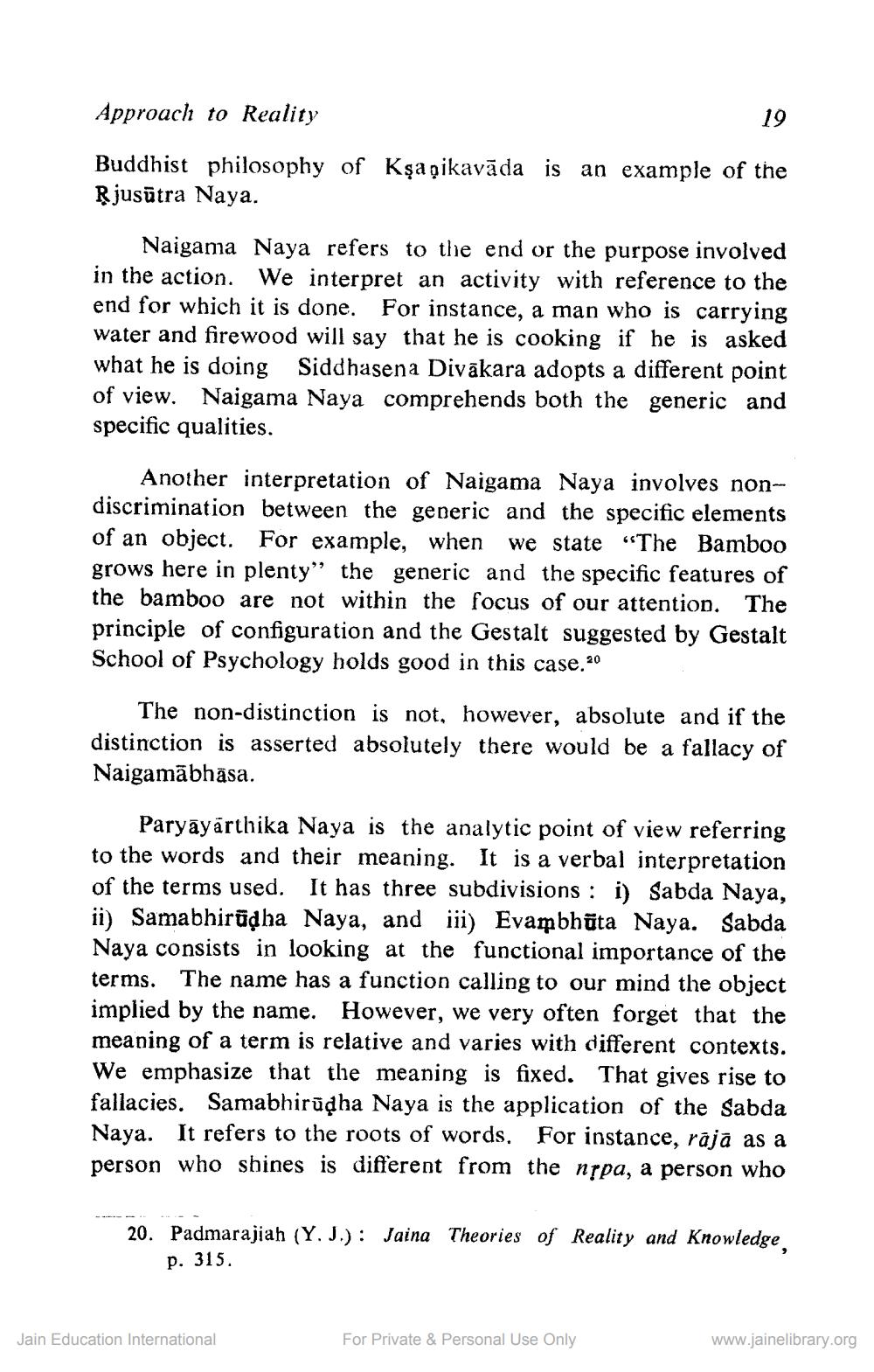________________
Approach to Reality
Buddhist philosophy of Kṣaṇikavāda is an example of the Ṛjusūtra Naya.
Naigama Naya refers to the end or the purpose involved in the action. We interpret an activity with reference to the end for which it is done. For instance, a man who is carrying water and firewood will say that he is cooking if he is asked what he is doing Siddhasena Divakara adopts a different point of view. Naigama Naya comprehends both the generic and specific qualities.
19
Another interpretation of Naigama Naya involves nondiscrimination between the generic and the specific elements of an object. For example, when we state "The Bamboo grows here in plenty" the generic and the specific features of the bamboo are not within the focus of our attention. The principle of configuration and the Gestalt suggested by Gestalt School of Psychology holds good in this case.20
The non-distinction is not, however, absolute and if the distinction is asserted absolutely there would be a fallacy of Naigamābhāsa.
Paryayarthika Naya is the analytic point of view referring to the words and their meaning. It is a verbal interpretation of the terms used. It has three subdivisions: i) Sabda Naya, ii) Samabhiruḍha Naya, and iii) Evambhuta Naya. Sabda Naya consists in looking at the functional importance of the terms. The name has a function calling to our mind the object implied by the name. However, we very often forget that the meaning of a term is relative and varies with different contexts. We emphasize that the meaning is fixed. That gives rise to fallacies. Samabhirūḍha Naya is the application of the Sabda Naya. It refers to the roots of words. For instance, rājā as a person who shines is different from the nṛpa, a person who
20. Padmarajiah (Y. J.): Jaina Theories of Reality and Knowledge,
p. 315.
Jain Education International
For Private & Personal Use Only
www.jainelibrary.org




